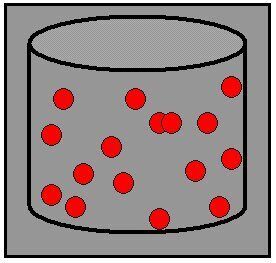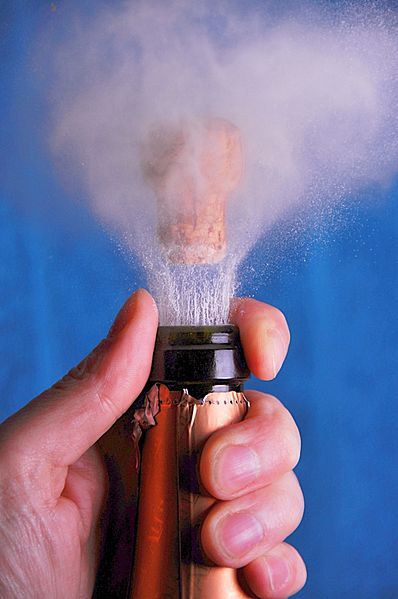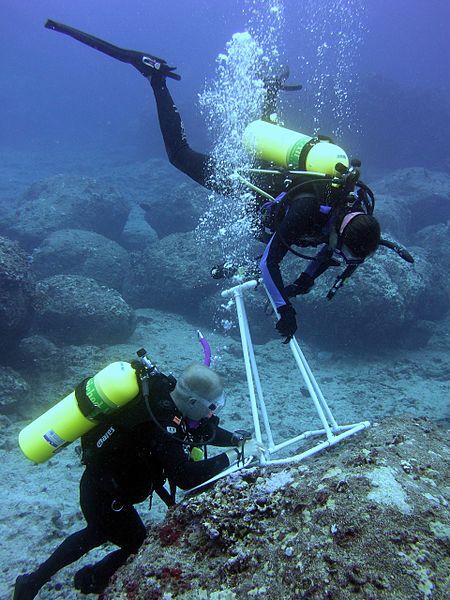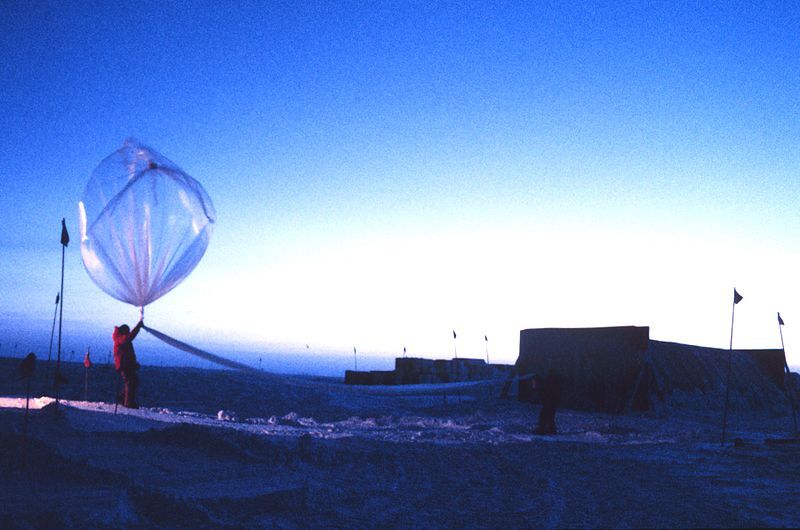Compressibility is the property of a gas of being able to decrease in volume under the effect of a force.
Expansion is the property of a gas of being able to dilate to occupy all the space available to it.
The gaseous state is one of three states of matter, the others being the solid and liquid phases. On a macroscopic scale, a gas is a collection of atoms or molecules that are very loosely bound and virtually independent of each other. In its gaseous state, matter has neither its own shape nor its own volume. Instead, a gas tends to occupy all the available volume.

This particle model of the gaseous state explains the compressibility and expansion properties of gases.
The average distance between particles in a gas is greater than the size of its particles. This distance can be reduced by an external force. This means that the gas particles can be brought closer together, containing an equivalent amount in a smaller volume. In spite of this, the particles are still far enough apart to retain their gaseous state. This property of gases is called compressibility. A gas is therefore defined as a compressible fluid. Solids and liquids do not have this property, as they have a defined volume.
The compressibility of gases means that large amounts can be stored in small spaces. For example, a diver can breathe underwater using compressed air in a cylinder. A scuba tank can hold around 18 litres of compressed air underwater, the equivalent of around 3600 litres of air at normal atmospheric pressure.
When a bicycle pump works, the air is compressed before being ejected into the tire (left). The compression of carbon dioxide in a bottle of champagne causes the cork to pop when it is opened (centre). A diver can take a large amount of air underwater by compressing the air in his dive tank.
Because the gas particles are so far apart, they have space to travelled. As a result, they travel continuously in a straight line in all directions. If the container they are in has no fixed volume, the impact of the gas particles on the walls of the container creates significant pressure. This increases the volume of the container since the gas particles will take up all the space available to them. This is known as dilation. The more a gas expands, the more the space between its particles increases. This expansion phenomenon varies according to atmospheric pressure.
A sounding balloon is only slightly inflated at low altitude and inflates at high altitude due to the low atmospheric pressure.



